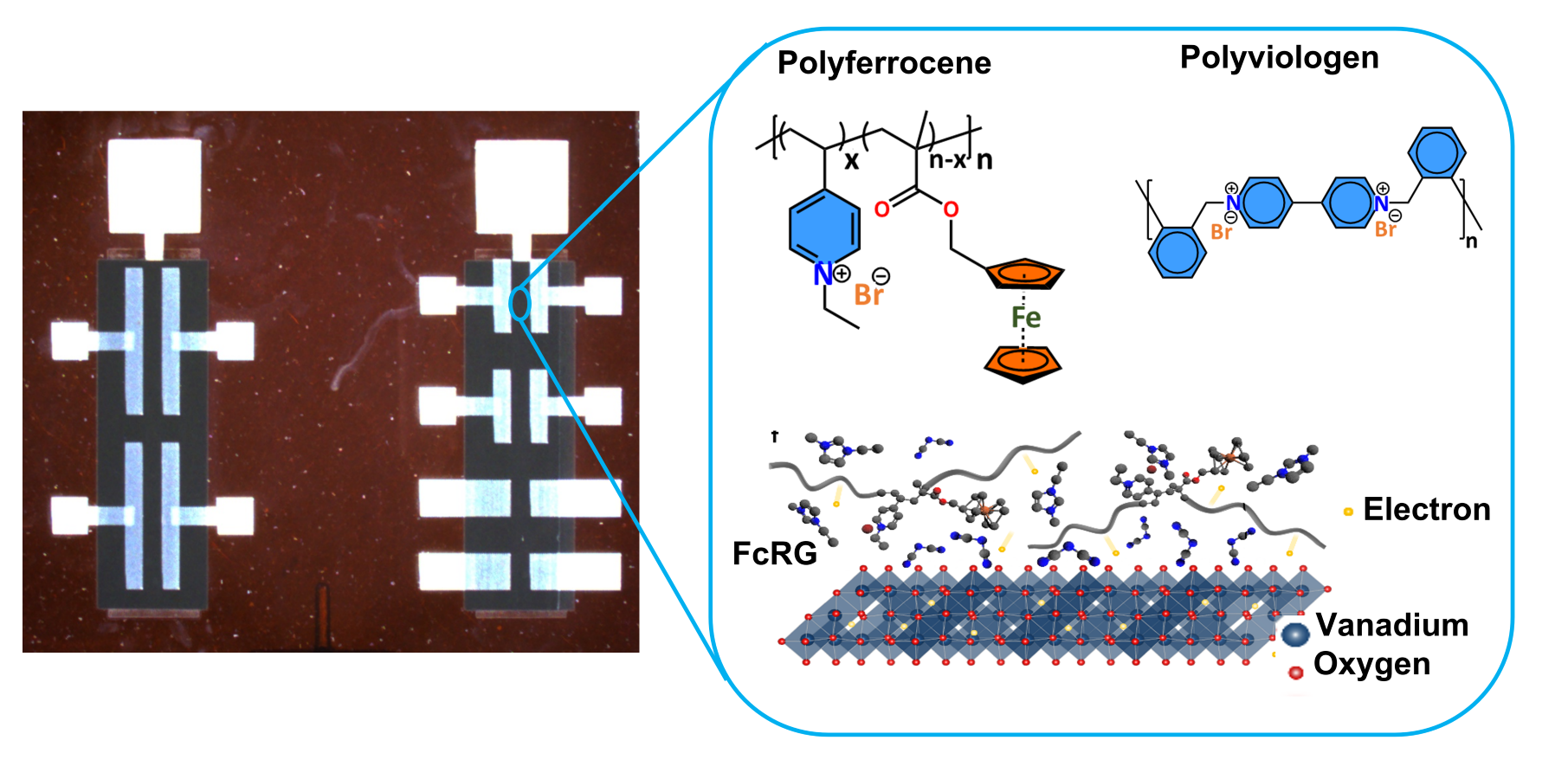Printed hybrid electronics (PHE) is an emerging microelectronics manufacturing platform that enables large-volume high-throughput production of miniaturized flexible, portable devices. As an additive manufacturing technique, PHE can fabricate heterogeneous structures of component circuits with different numbers of layers on a substrate at one step. It also provides opportunities to integrate new functionalities associated with nanomaterials, polymers, and small molecules, which cannot be achieved by traditional microelectronic synthesis. In the past five years, the PHE market has shown significant growth, leading to numerous new commodities, such as wearable health monitoring sensors, flexible displays, and 3D configurable antennas. However, high-performance printable transistors have not been demonstrated by the community due to lack of superior printable channel and gate materials.
In this project, the team is developing a group of novel redox gate materials based on poly-ionic liquid and printable transition metal oxide channel materials, which can fill the aforementioned technical gap. Our redox gate materials can operate beyond the electrostatic doping limitation while the charge carriers are still electrons or holes instead of ions and is thus fundamentally different from other redox type transistor materials, such as ion-conductive semiconductor polymers and oxides [1]. The advantages of electron/hole type redox gate materials include reversible transformation between electronic states at low sub-volt gate voltages with high carrier density modulation but without structural/chemical perturbations. A proof-of-concept study on thin films showed more than a thousand-fold carrier density modulation under a 0.7 V gate voltage. By choosing different channel materials we can tune gate voltages to efficiently turn transistors on and off.
This project is a joint effort on material chemical synthesis, printing process development, and advanced material and structural characterization between researchers in Materials Science, Applied Materials, and X-ray Science divisions. Successful development of printable redox-gate and channel materials will allow fabrication of printable CMOS devices and studies of many previously unapproachable device design questions, such as transient response of the logical gates and parasitic effects.
[1] US Patent Application 2022/0216321 A1.
